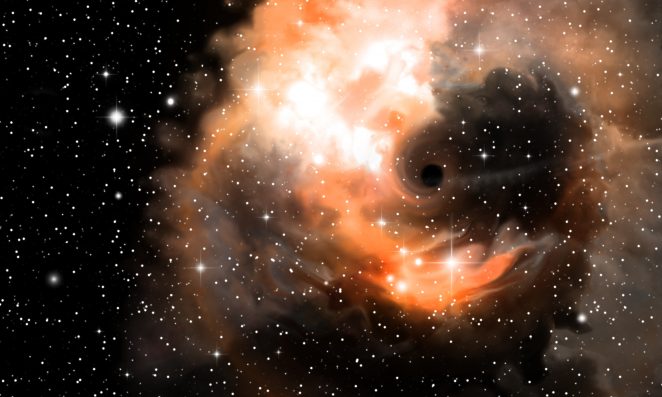Black Holes Could Help Expose Dark Matter, Which Is Invisible

New research suggests that when dark matter interacts with tiny black holes, faint flashes of light could be produced. Someday, the flashes could help scientists study dark matter, which has been difficult to do since it’s invisible.
The masses of almost every galaxy in the universe are mostly made up of dark matter. Still, its exact nature is a mystery. It has gravity, but it does not interact with light or generate its own light at all.
So, the existence of dark matter is only based on circumstantial evidence from its gravitational interactions with everything else.
Researchers are eager to find ways to make dark matter more visible. They have devised a scenario in which black holes can expose dark matter.
The explanation seems counterintuitive since black holes are known to swallow any light that gets too near them. But here’s how the theory makes it possible.
The researchers are working under the assumption that dark matter can interact with regular matter and produce light in the process. But for some reason, light is usually not produced.
Perhaps a certain amount of energy is required for light to occur. Or, light is prohibited due to a lack of a mediator particle. Black holes could be the answer to lighting up dark matter.
However, they can’t just be any black holes. Only super tiny primordial black holes will be sufficient for the job. Instead of being the leftovers of giant stars, they are the remains of chaotic eras that took place during the early universe.
Matter and energy were spontaneously compressed to make them. An English theoretical physicist and cosmologist named Stephen Hawking was the first to hypothesize the presence of smaller primordial black holes in the Milky Way in 1974.

Peter Jurik – stock.adobe.com – illustrative purposes only
But so far, none have turned up during observations. If they do exist, they must be very uncommon. Primordial black holes would evaporate Hawking radiation, which is a quantum effect where virtual particles appear near the edge of a black hole, and some are able to escape. It was also discovered by Stephen Hawking.
The smaller the black hole, the more radiation it releases. If primordial black holes were about the size of an asteroid, they would be unleashing lots of radiation into the universe today.
The radiation from these black holes does not just consist of photons, or light particles. Nearly every kind of particle, including dark matter, is within the radiation.
As primordial black holes decay, they release dark matter particles, which in turn stimulate surrounding dark matter. The interaction causes a chain reaction that can emit visible light for a brief time.
It is predicted that the flashes of light will be in the form of gamma rays. Currently, scientific experiments cannot detect them because they are so weak, but future observatories may be sophisticated enough to find them.
The findings were published in the preprint database arXiv.
Sign up for Chip Chick’s newsletter and get stories like this delivered to your inbox.
More About:News